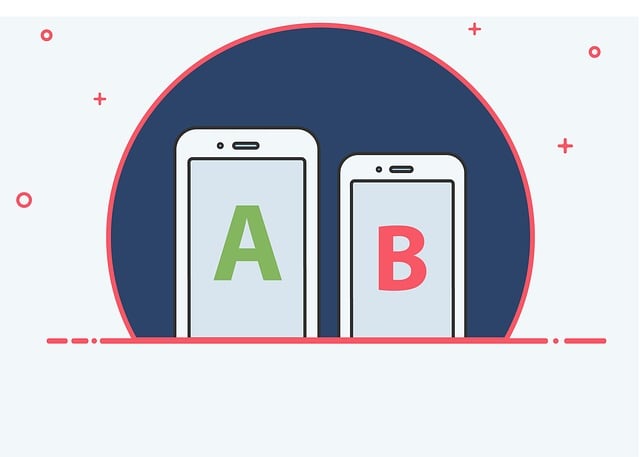In today's digital era, the latest web design trends focus on creating responsive interfaces compatible with diverse devices and screen sizes. Key tools include Flexbox for dynamic space distribution and Grid Layouts for structured content layouts. Minimalism emphasizes simplicity, white space, and essential elements, aligning with user preferences for intuitive experiences. The Mobile-First Approach optimizes for smaller screens first, enhancing speed and accessibility. Microinteractions add subtle animations for enhanced usability, while Dark Mode offers reduced eye strain and flexible design. Voice User Interfaces (VUI) enable natural interactions, catering to modern user behaviors. Personalization leverages data analytics for tailored experiences, fostering higher engagement. Performance optimization techniques like lazy loading and minification ensure instant content access and better search rankings.
In today’s digital landscape, responsive web design is no longer a choice but a necessity. As users access websites across various devices and screen sizes, the latest web design trends focus on creating adaptive interfaces that offer seamless experiences. From unlocking the power of Flexbox and Grid Layouts to embracing minimalist design aesthetics, this article explores the most prominent responsive web design trends shaping the industry. Discover how mobile-first approaches, microinteractions, dark mode options, voice user interfaces (VUI), personalization, and performance optimization are revolutionizing user engagement and accessibility.
Unlocking the Power of Flexbox and Grid Layouts: Creating Adaptive Interfaces

In today’s digital landscape, the latest web design trends are all about creating adaptive and responsive interfaces that cater to a wide range of devices and screen sizes. Two powerful tools that have taken center stage in achieving this are Flexbox and Grid Layouts. These CSS layouts offer developers an efficient and flexible way to structure content, ensuring seamless visual continuity regardless of whether the site is viewed on a smartphone, tablet, or desktop computer.
Flexbox, with its dynamic nature, allows for easy distribution of space and alignment of items within a container, making it ideal for creating fluid and responsive designs. Grid Layouts, on the other hand, provides a more structured approach by dividing a page into rows and columns, enabling developers to lay out content in a grid-based system that adapts gracefully across different screen resolutions. By harnessing the potential of these latest web design trends, designers and developers can unlock innovative ways to craft engaging user experiences that truly embrace the diverse nature of modern digital consumption.
The Rise of Minimalist Design: Simplicity Meets Modern Aesthetics

In the realm of responsive web design, one prominent trend that has been gaining momentum is the embrace of minimalism. As we explore the latest web design trends, it’s evident that simplicity and modern aesthetics are intertwining to create visually appealing and user-friendly interfaces. This shift towards minimalism involves stripping down designs to their essential elements, prioritizing clean layouts, and utilizing ample white space. Such an approach not only enhances site speed and improves accessibility but also fosters a sense of elegance and sophistication.
The rise of minimalist design aligns with users’ evolving preferences for intuitive, uncluttered digital experiences. By focusing on content rather than flashy distractions, minimalist web designs ensure that visitors can effortlessly navigate and engage with the website’s core offerings. This trend continues to reverberate across various industries, as brands seek to create websites that are both visually striking and functionally efficient in today’s digital era.
Mobile-First Approach: Optimizing for a Seamless User Experience on All Screens

In the realm of responsive web design, the Mobile-First Approach is a leading trend among developers and designers. This strategy prioritizes optimizing websites for smaller screens first, ensuring a seamless user experience across all devices. By adapting to the constraints of mobile phones and tablets, developers can create dynamic layouts that adjust gracefully, enhancing usability and accessibility.
The Mobile-First approach leverages the latest web design trends, focusing on lightweight code, efficient resource loading, and intuitive navigation. This method not only improves page load times but also ensures that content is readily consumable on smaller screens. As users increasingly access the internet via mobile devices, this trend guarantees that websites remain competitive and relevant in today’s digital landscape.
Microinteractions: Adding Subtle Animations for Enhanced Usability

In the realm of responsive web design, microinteractions have emerged as a powerful tool to enhance user experiences in the latest web design trends. These subtle animations, though small in scale, can significantly impact usability by providing users with visual feedback and making interactions more engaging. Microinteractions add a layer of sophistication to websites, ensuring that every click or scroll is accompanied by a seamless, responsive gesture.
By incorporating microanimations, designers can create dynamic and intuitive interfaces. For instance, a simple tap on a button could cause it to bounce slightly, indicating successful action. Such interactions not only make the user interface more pleasant but also foster a deeper connection between users and the website, aligning with the evolving expectations of modern digital experiences.
Dark Mode and Color Schemes: Catering to Diverse Visual Preferences

In recent years, one of the most prominent and widely adopted features in web design has been Dark Mode. This trend caters to users’ diverse visual preferences and offers several advantages, such as reduced eye strain during low-light conditions. By providing an option for a dark color scheme, websites can appeal to a broader audience, including those with visual impairments or those who simply prefer a more minimalist and elegant look.
The flexibility of Dark Mode extends beyond aesthetic choices; it also allows designers to explore innovative color combinations. The latest web design trends encourage the use of subtle gradients and nuanced colors, creating visually appealing interfaces that adapt seamlessly to different lighting environments. This adaptability not only enhances user experience but also ensures that websites remain aesthetically pleasing and modern in a fast-paced digital landscape.
Voice User Interfaces (VUI): The Future of Interaction Design

Voice User Interfaces (VUI) are rapidly gaining traction as one of the most exciting and disruptive trends in the latest web design trends. With advancements in artificial intelligence and natural language processing, VUI offers a more intuitive and human-like interaction with digital interfaces. As users increasingly prefer hands-free, voice-activated devices like smart speakers and smartphones, VUI becomes essential for creating responsive web designs that cater to modern user behaviors.
The integration of VUI into web design allows for more natural conversations between users and applications. This shift from traditional text-based interfaces to voice-driven interactions opens up new possibilities for enhancing user experiences, especially on mobile platforms. By leveraging VUIs, designers can create more accessible and inclusive digital environments, making websites and apps usable by a broader range of people, including those with visual impairments or limited dexterity.
Personalization at Scale: Tailoring Web Experiences for Individual Users

In the realm of responsive web design, personalization has emerged as a game-changer in the latest web design trends. The ability to tailor online experiences for individual users is no longer a luxury but a necessity. With advancements in technology and data collection, designers can now create dynamic and customized interfaces that cater to diverse user preferences and behaviors. This approach ensures that each visitor receives a unique, personalized journey through the website or application.
By leveraging machine learning algorithms and user behavior analytics, developers can offer content, product recommendations, and visual styles that align with individual tastes. From personalized product displays on e-commerce sites to tailored news feeds on social media platforms, this level of customization enhances user engagement and satisfaction. The latest web design trends emphasize creating responsive designs that adapt not only to various devices but also to the unique needs and preferences of each user, fostering a deeper connection between brands and their audiences.
Performance Optimization: Faster Load Times and Efficient Resource Usage

In the realm of responsive web design, performance optimization is a top priority in the latest web design trends. With users expecting instant access to content and services across all devices, faster load times have become non-negotiable. Designers and developers are leveraging techniques like lazy loading, where resources are only loaded when needed, and optimizing images to reduce file sizes without sacrificing quality. Efficient resource usage involves minifying code, combining files, and utilizing modern browsers’ caching capabilities to ensure that websites respond swiftly and deliver a seamless user experience.
These performance optimizations not only enhance the speed of a site but also play a crucial role in search engine rankings. Google and other major search engines prioritize fast-loading pages, making it essential for web designers to stay updated with the latest techniques to ensure their websites are competitive in today’s digital landscape.
